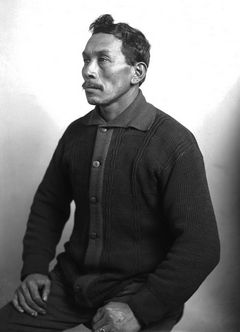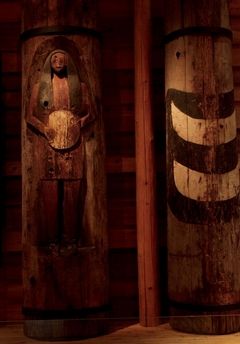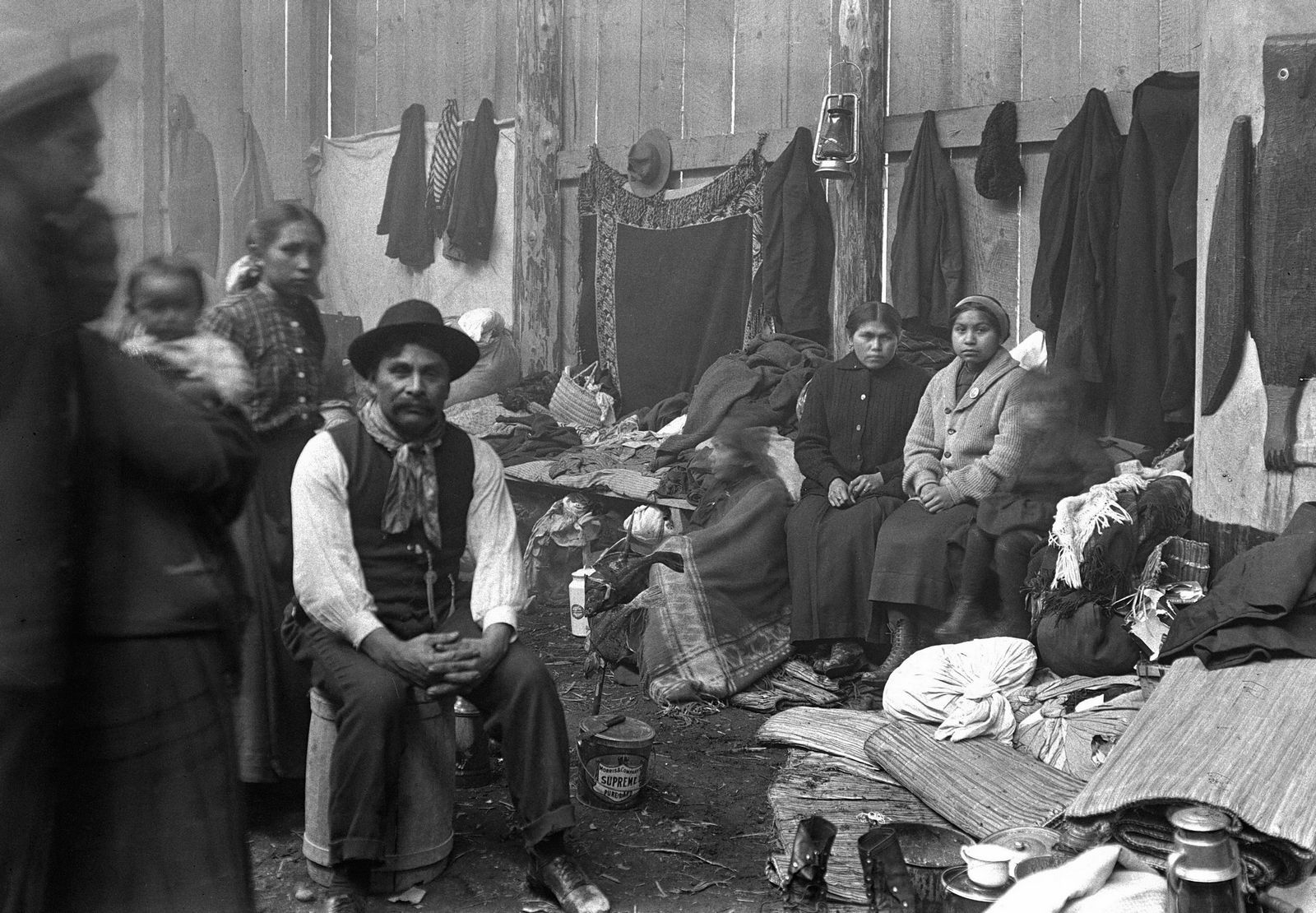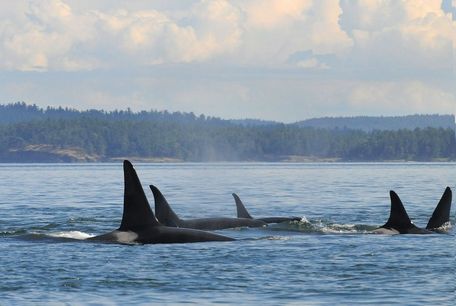Month: December 2013
Prep boys basketball: Tulalip Heritage 72, Orcas Island 41
Source: The Herald, Friday, December 27, 2013
DARRINGTON — Keanu Hamilton scored a team-high 14 points and Shawn Sanchey added 12 as Tulalip Heritage defeated Orcas Island in a Darrington Holiday Tournament game. Next up for the Hawks is tournament host Darrington on Saturday at 7:30 p.m.
At Darrington H.S.
Orcas Island 7 11 15 15 — 41
Tulalip Heritage 27 14 9 22 — 72
Orcas Island–Dimtri Pence 9, Gage Horlow 13, Aidan Kavnze 15, Bullock 4. Tulalip Heritage–Brandon Jones 2, Dontae Jones 7, Payton Comenote 9, Robert Miles 10, Shawn Sanchey 12, Keanu Hamilton 14, Brad Fryberg 2, Willy Enick 2, Mike Leslie 4, Alan Enick, Ayrik Miranda 10. 3-point goals–Miranda 2, D. Jones, Comenote, Sanchey. Records–Orcas Island not reported. Tulalip Heritage 8-0.
Like our high school sports page on Facebook, follow @HeraldNetPreps on Twitter and look for updates on our Prep Zone blog.
Prep girls basketball: Orcas Island 70, Tulalip Heritage 66 (OT)
Source: The Herald
DARRINGTON — Katia Brown and Kaela Tyler made a combined 10 3-pointers as Tulalip Heritage nearly overcame a 23 point halftime deficit to fall to Orcas Island in overtime of a Darrington Holiday Tournament game.
At Darrington H.S.
Orcas Island 12 21 17 8 12 — 70
Tulalip Heritage 4 6 23 25 8 — 66
Orcas Island–A. Susol 15, V. Nigretto 12, K. Rogers 8, E. Minnis 0, A. Dean 11, S. Rogers 18, L. Miller 0, H. Gayles 6, H. Thompson 0. Tulalip Heritage–Katia Brown 22, Adiya Jones 17, Shania Moses 0, Paris Verda 0, Desirae Williams 2, Aliya Jones 3, Deztiny White 0, Kaela Tyler 21, Santana Shopbell 1. 3-point goals–Brown 6, Tyler 4, Susol, Nigretto, K. Rogers. Records–Orcas Island not reported. Tulalip Heritage 5-2.
Like our high school sports page on Facebook, follow @HeraldNetPreps on Twitter and look for updates on our Prep Zone blog.
William Shelton revived Tulalip culture

By Bill Sheets, The Herald
TULALIP — When it came to healing the rift between local Indian tribes and the white world that once stripped Snohomish County’s original inhabitants of much of their culture, there has been no more important figure than William Shelton.
Early in the 20th century, Shelton worked hard to restore and preserve early tribal traditions that had been banned on the Tulalip Indian Reservation for decades.
At the same time, he offered an olive branch to the non-tribal community, reaching out to speak at club meetings and schools. He attended fairs and gave radio interviews.
He served as an ambassador, a liaison between the two worlds.
A Tulalip tribal member, a historian and a filmmaker recently joined forces in hopes of making a documentary to spotlight Shelton’s effect on local tribal and non-tribal culture alike.
“I really think that people need to know about William Shelton,” said Lita Sheldon, the tribal member spearheading the project.
Her goal, she said, is to make an hour-long documentary to air on the History channel, Biography channel or PBS.
Sheldon, along with Everett-based historian David Dilgard and Bellingham video producer Jeff Boice, started the project in 2012 with a short video overview of Shelton’s life.
The 11-minute video, supplemented with historical photos and footage, features an interview with Dilgard in which he describes how Shelton revived tribal art on the Tulalip reservation by carving his “sklaletut” pole in 1912.
Shelton interviewed tribal elders about their encounters with spirit helpers, including animals, birds and people, and depicted them in carvings on both sides of a 60-foot pole.
Sklaletut is the word for spirit helpers in Lushootseed, the language of Puget Sound-area Indian tribes.
“There is a broken link between my race and the white people,” Shelton wrote in “Indian Totem Legends of the Northwest Coast Country” in 1913, an article originally printed for an Indian school in Oklahoma and later in The Herald.
“So I thought I better look back and talk to the older people that are living and try to explain our history by getting their totems and carve them out on the pole like the way it used to be years ago,” Shelton wrote.
The pole has deteriorated over the years, but part of it still stands in front of Tulalip Elementary School on the reservation.
Shelton carved several other poles, including one that stood for decades at 44th Street SE and Evergreen Way in Everett — for which the Totem restaurant was named.

These two poles carved by William Shelton stood in his original longhouse and now are at the cultural center.
The pole deteriorated and was taken down in the late ’80s or early ’90s. It’s now being preserved in a warehouse on the Tulalip reservation.
About 200 of the 1,000 items in the collection of the recently built Hibulb Cultural Center either were made by Shelton or came from among other items stored on his family’s property, assistant curator Tessa Campbell has said.
Shelton ran the sawmill on the reservation and served as a translator for tribal elders who did not speak English. He supervised timber sales, served for a time as police chief and sold war bonds during World War I.
He spoke at the dedication of Legion Park in Everett shortly before his death from pneumonia in 1938 at age 70, according to the city.
In the 1990s, Lita Sheldon worked with Boice, the filmmaker, on short historical and Lushootseed language videos on the reservation.
Boice, a former videographer, editor and producer at KVOS-TV in Bellingham, did freelance video work for the Tulalips for several years, including recording tribal events.
Recently, Sheldon contacted Boice and Dilgard about her idea and the short video was made. The video won best overall film and best documentary short film at the Hibulb Cultural Center Film Festival last January.
Later, it was shown at the American Indian Film Festival in San Francisco in November and at the Red Nation Film Festival in Los Angeles, Sheldon said.
Sheldon said she needs to raise about $60,000 to fully fund the documentary. The cost would include travel to locations in the East and Midwest where William Shelton sent some of his poles, she said.
The film project had a “kickstarter” web page last summer but received only a little more than $2,800 in pledges, so the idea was shelved temporarily.
Sheldon hasn’t given up, though. She said she hasn’t asked the Tulalip Tribes for funds.
Niki Cleary, a spokeswoman for the tribes, said the project could be eligible for funding as a tribal endeavor, but Sheldon’s group would have to apply. The group also could gain nonprofit status and apply through the tribes’ annual charitable contribution program, she said.

The Tulalip Longhouse interior is shown during a “Treaty Day” celebration in January 1914. Posts inside the longhouse were ornamented by William Shelton with clan and family symbols.
Lita Sheldon, 61, works as the librarian at the Hibulb center but stressed that she is doing this project on her own.
She said it’s not just a matter of money but also of gathering more information about the former tribal leader.
Much of the history about Shelton came through his daughter, Harriette Dover, who died in 1991, as well as from other surviving relatives.
Sheldon is hoping more people with knowledge of William Shelton come forward.
“There’s not a definitive tribal history written,” she said. “This is the closest thing to a tribal history.”
The project
Anyone interested in the William Shelton documentary project may contact Lita Sheldon at litasheldon@yahoo.com.
‘Mary Poppins,’ 24 more films new to national archive
By Brett Zongker, Associated Press
WASHINGTON — Just in time for a new movie about the making of “Mary Poppins,” the 1964 Disney classic starring Julie Andrews and Dick Van Dyke has been selected for preservation at the Library of Congress so future generations of Americans can see it.
The library inducted 25 films last week into the National Film Registry to be preserved for their cultural, historical or cinematic significance.
This year’s selections include Quentin Tarantino’s “Pulp Fiction,” the space race film “The Right Stuff,” and Michael Moore’s documentary confronting the auto industry, “Roger and Me.”
Curators said it was a coincidence that they selected “Mary Poppins” just ahead of its 50th anniversary and during the release of the new Disney film “Saving Mr. Banks,” which is about the making of the movie.
Steve Leggett, program coordinator for the library’s National Film Preservation Board, said “Mary Poppins” had been on the short list of picks many times before.
The films chosen this year span from 1919 to 2002 and include Hollywood classics, documentaries, silent films, independent flicks and experimental pictures.
Congress created the program in 1989 to ensure that gems from American movie history are preserved for years to come.
Some are chosen for their influence on movies that would follow, as with “Pulp Fiction” from 1994. The film board called it a milestone for independent cinema, and Leggett noted Tarantino’s “stylized violence and kind of strangeness” in the cinematography.
Older films often become endangered of being lost, said Librarian of Congress James Billington, “so we must protect the nation’s matchless film heritage and cinematic creativity.”
This year’s selections represent the “extreme vitality and diversity of American film heritage,” Leggett said. Many illustrate American culture and society from their times, he said.
The oldest films joining the registry this year are from the silent era. They include 1920’s “Daughter of Dawn,” which featured an all-Native-American cast of Comanche and Kiowa people, with a fictional love story and a record of Native American traditions of the time.
The 1919 silent film “A Virtuous Vamp,” a spoof on workplace romance, made Constance Talmadge an early film star. And “Ella Cinders” from 1926 featured the famous actress Colleen Moore.
Other notable selections this year include the 1956 science-fiction film “Forbidden Planet,” which depicted humans as space travelers to another planet; the popular 1960 western “The Magnificent Seven”; and the 1946 film “Gilda,” which is the first in the registry featuring actress Rita Hayworth.
Also included is the 1966 adaptation of “Who’s Afraid of Virginia Woolf,” starring Elizabeth Taylor and Richard Burton. The movie earned Oscar nominations for them both, a win for Taylor, and launched the screen-directing career of Mike Nichols.
Original prints of even newer movies, such as Michael Moore’s “Roger and Me” from 1989, have become endangered. “The true regret I have is that the cities of Flint and Detroit, which are at the center of my film, are now in much worse shape — as is the American middle class in general,” Moore said.
Endangered Species Act: a 40-year fight to save animals

Members of L pod, one of the Salish Sea’s resident orca pods, heads north up Boundary Pass to Georgia Strait.
By Bill Sheets, The Herald
Forty years after the passage of the federal Endangered Species Act, the state and Snohomish County remain squarely on the edge of that preservation frontier.
More than 40 animal species in Washington are listed by the federal government as either endangered or threatened under the law, signed by President Richard Nixon on Dec. 28, 1973. Many others are listed as species of concern.
Among creatures found in waters in and around Snohomish and Island counties, seven species of fish or marine mammals are listed under the act.
Southern resident killer whales and bocaccio rockfish are listed as endangered. Puget Sound chinook salmon, Puget Sound steelhead, bull trout, yelloweye rockfish, canary rockfish and Pacific smelt are threatened.
Nationwide, 645 species of animals and 872 plants or trees native to the U.S. are listed as threatened or endangered, according to the U.S. Fish and Wildlife Service.
Of the local fish species and orcas, salmon and bull trout were listed in 1999, the killer whales in 2005 and the other fish species in 2010.
Reasons cited for the decline of the fish are many, including pollution, overfishing and loss of habitat. In the case of killer whales, dwindling supply of their diet staple — chinook salmon — is a major contributing factor, officials say.
Supporters claim many success stories for the Endangered Species Act, with bald eagles and peregrine falcons among the more prominent examples.
Gray whales were taken off the list in 1994 and steller sea lions just this year.
According to U.S. Fish and Wildlife, 99 percent of the hundreds of species listed since the Endangered Species Act became law have been prevented from going extinct.
The law protects species by preventing them from being harmed or captured and by regulating human activity in their habitat areas.
Perhaps the best feature of the Endangered Species Act, some say, is that it keeps the species’ problems in the public spotlight.
“It has pulled people together to talk about what to do,” said Daryl Williams, environmental liaison for the Tulalip Tribes.
Recovery for many species, however, is slow and not guaranteed.
“Listing is a way of sort of planning for recovery, if you will,” said Brent Norberg, a marine mammal biologist with the National Marine Fisheries Service in Seattle.
The southern resident orca population, for example, had 88 whales in 2004, the year before it was listed under the ESA. The population now is down to 80, according to the Orca Network, a Whidbey Island-based group that tracks the whales.
“Because they’re so long-lived and their recruitment is so slow and their numbers are so small, it’s going to be quite a lengthy process,” Norberg said.
William Ruckleshaus, the first director of the Environmental Protection Agency under Nixon in the early 1970s, is 81 and lives in Medina.
The EPA was created and Endangered Species Act was passed after pollution and declines in species had reached alarming levels, Ruckleshaus said. The Cuyahoga River in northeast Ohio, for example, famously caught fire in 1969.
“The public demanded something be done about it and the president responded,” he said.
He said the endangered species law might have overreached.
“We passed laws that promised levels of perfection that probably weren’t possible. It’s hard to do it, to be honest with you,” Ruckleshaus said. The law has been refined over time, he said.
Ruckleshaus works part-time for Madrona Venture Group, a venture capital firm, and has served on the boards of the Puget Sound Partnership Leadership Council and the Salmon Recovery Funding Board.
“The motivation behind the ESA couldn’t have been any higher — we want to preserve all living things on Earth. Who’s against that?” Ruckleshaus said.
“I think it’s been very positive overall,” he said. “It’s shown how what we believe to be innocent acts can have devastating effects on species.”
The Endangered Species Coalition, a Washington, D.C.-based environmental group, has issued a report titled “Back from the Brink: Ten Success Stories Celebrating the Endangered Species Act at 40.”
Among those stories is perhaps the most high-profile recovery: the national symbol, the bald eagle.
The eagle’s numbers in the 48 contiguous states declined from roughly 100,000 in the early 19th century to only 487 nesting pairs in 1963, according to the U.S. Fish and Wildlife website.
Several measures were taken to help the eagle, beginning with the 1940 Bald Eagle Protection Act, which made it illegal to kill an eagle. The pesticide DDT, found to have thinned the eggshells of eagles and other birds, was banned in 1972.
Still, “listing the species as endangered provided the springboard” for the U.S. Fish and Wildlife Service to accelerate recovery through captive breeding, law enforcement and nest-site protection, according to the agency’s website
Bald eagles rebounded and they now number about 10,000. The eagles were taken off the list in 2007.
The Endangered Species Act’s effect on salmon is not so clear, the Tulalips say.
Development that destroys habitat is not restricted enough to offset the losses, Williams said.
“We’re still losing habitat faster than we’re gaining it from restoration,” he said.
The problem is inconsistency in rules among various agencies involved in environmental protection, said Terry Williams, fisheries and natural resources commissioner for the tribes.
Also, because of the ESA, some habitat restoration projects have to jump through the same hoops as other construction, causing delays in measures that could help fish, Daryl Williams said.
“I kind of have mixed feelings about it,” he said.
Those restrictions may be a necessary evil, said Norberg, of the fisheries service.
For example, if creosote-soaked logs are being removed from a waterway, if it’s not done properly, it could result in creosote finding its way back into the water, “so it does as much harm as it does good,” he said.
Restrictions also can affect landowners’ use of their property. This not only angers some property owners but can defeat the intent of the law, said Todd Myers, environmental director for the Washington Policy Center, a right-leaning think tank in Seattle.
Because the law governs use of land where a listed species is found, some landowners take steps to eliminate habitat for a species on their property so it won’t be seen there, Myers said.
“You get a regulatory stick that puts landowners at odds with habitat recovery,” he said.
A better way, he said, is to reimburse landowners for measures taken to preserve or promote habitat, he said.
“That at least takes a step toward making a landowner a partner as opposed to an opponent.”
Despite the ESA’s flaws, “it is working well in terms of bringing all the various parties together to talk and to plan accordingly,” Norberg said.
The decline of the salmon might not be reversed without it, Ruckelshaus said.
“It is an extraordinarily complex problem,” he said. “But for the ESA I doubt we would have paid the attention to it we have, and I think that is absolutely necessary for it to recover.”
Boeing Has Jobs for STEM Students

The Boeing 787 Dreamliner. Boeing seeks Native business to partner with and Native students who could be potential Boeing employees.
Jonathon GreyEyes has one word of advice for Native students interested in pursuing challenging, satisfying and well paid careers: STEM.
Okay, it’s really four words—science, technology, engineering and mathematics. Those are the areas of study students should focus on in order to move ahead in the 21st century global workplace, GreyEyes says.
GreyEyes, a Navajo Nation citizen, is a small business liaison officer for the massive, multinational Boeing Company, the world’s leading aerospace company and the largest manufacturer of commercial jetliners and military aircraft combined. Boeing also designs and manufactures rotorcraft, electronic and defense systems, missiles, satellites, launch vehicles and advanced information and communication systems. In short, the company is involved in everything that flies and/or uses technology, which is to say just about every business and employment opportunity in the global marketplace.

As a small business liaison officer, GreyEyes works to increase small and diverse business participation in support of the Boeing’s company goals and objectives. As a Native American, he tries to engage Indian country as much as possible by seeking out not only small Native-owned businesses for Boeing to partner with, but also Native students who are potential Boeing employees.
“My responsibilities primarily are to maximize opportunities for small businesses of any type to participate [in] Boeing’s activities,” GreyEyes told Indian Country Today Media Network. “Now, being Native American, I’ve tried to seek out Native American companies to participate in the different research, primarily research and development.”
Boeing and other large companies that receive government contracts actively recruit employees in the Native American community, GreyEyes said. “There’s lots of opportunity in just about any field in which somebody would want to work. For most jobs a college degree is going to be required. I think across the board—not just in the Native American community, but in any group that you want to look at. We’re seeing a decline in [students pursuing] the STEM fields…and so I would encourage students (and I’m encouraging my own children) to focus on these areas where they have an aptitude and an interest because there’s a lot of opportunity in [these] fields.”
One of the ways he seeks out both small Native-owned businesses and Native students is through the American Indian Science and Engineering Society, whose mission since 1977 has been to substantially increase American Indian and Alaska Native representation in the STEM fields—as students, professionals, mentors, and leaders, according to its website.

The AISES national conference is one of the big annual events that Boeing supports every year. The company interviews and hires new employees there. “It’s very important to Boeing to give everybody an opportunity to participate with Boeing either as an employee or as a subcontractor—and, fortunately, that’s why people like me have a job maximizing opportunity!” he said. GreyEyes is a lifetime member of AISES as a Sequoyah Fellow. The program was named in memory of Sequoyah, who perfected the Cherokee alphabet and syllabary in 1821, resulting in the Cherokee Nation becoming literate in less than one year, according to the AISES website. “In this spirit, AISES Sequoyah Fellows are recognized for their commitment to AISES’s mission in STEM and to the American Indian community. They bring honor to AISES by engaging in leadership, mentorship, and other acts of service that support the students and professionals in the AISES family,” the site says.
What GreyEyes does at Boeing, essentially, is match jobs to businesses. He looks at the scope of work that the company intends to subcontract and then provides the program manager with as many opportunities and alternatives in terms of small businesses that can provide the services. “In the area of research and development it’s typically very specialized. I don’t get involved until it’s [a job] over $650,000—that’s a government threshold for requiring a subcontracting plan—so that would be a small contract and some of the large contracts would be in hundreds of millions of dollars.”
GreyEyes said he loves his job and the most exciting thing is the variety of projects the company pursues. “I always tell people I’m living in a Star Trek world. Some of the contracts that we’ve won just stagger the imagination. I’m always amazed at the types of things we research. We have thousands of investigative researchers researching anything you can imagine,” he said.

One of Boeing’s recent innovations was the development of the Standoff Patient Triage Tool—an instrument Homeland Security dubbed as technology “to boldly go where no medical responder has gone before.” The wireless gizmo can detect a person’s vital signs—including whether a person is alive or dead—remotely from up to 40 feet away. The original intent was for battlefield use, but like other inventions developed for war the tool has numerous civilian applications including at fires, car crashes, mass casualties and other disasters.
Boeing has a number of programs that benefit its employees, including a program that pays employees to get graduate degrees, GreyEyes said.
There is a Native American affinity group to support the sizeable number of Native employees in the company, GreyEyes said. The group is organized regionally and nationally and is involved in all aspects including recruiting and mentoring Native students. “They might be showing them what life is like at a large corporation, helping them understand why education is so important and how it’s going to benefit them when they come to a large corporation like Boeing.
“In addition, through AISES we talk students through all stages of their education from middle school on through graduate school, and we try to get them tied in to particular people at Boeing who might be good contacts for when they’re ready to look for employment and then at events like the AISES national convention where we have several people doing active hiring and interviewing on site—members of the affinity groups are involved in all those stages, and it’s not part of their job it’s just something they do on top of it because it’s important,” GreyEyes said.
Once people are employed at Boeing, the affinity group brings everyone together to talk about what life is like there and whether any issues the affinity group should raise need to be addressed. “It’s just general support for each other,” GreyEyes said.
To view the range of job opportunities at Boeing, log onto its website at Boeing.com and click Careers on the menu bar.
Read more at http://indiancountrytodaymedianetwork.com/2013/12/26/boeing-has-jobs-stem-students-152764
Winterfest, New Year’s Eve at the Space Needle and Polar Plunge
Special events leading up to 2014 include Seattle Center Winterfest, through Dec. 31; New Year’s Eve at the Space Needle, Dec. 31; Seattle Parks Polar Plunge Jan. 1.
By Madeline McKenzie, Seattle Times staff
It’s the last weekend of the holiday season and there’s still time to get out and experience light displays, the downtown carousel and other holiday happenings before it’s time to ring in the New Year.
Seattle Center Winterfest continues through Tuesday’s big New Year’s Eve celebration. Weekend entertainment includes Massive Monkees dance crew at 12:30 p.m. Sunday, and the Winterfest Ice Rink is open daily through Jan. 5.
Tuesday, New Year’s Eve, there’s a free, all-ages dance at Seattle Center Armory from 8-11:45 p.m. and the ice rink is open until 11:30 p.m. so there’s plenty to do before the up-close view of the grand fireworks show off our Space Needle to welcome 2014 at midnight.
Along with Seattle Center crowds, people at venues around the area with views of the Needle and TV viewers locally and around the world will admire the festive spectacle, one of the world’s largest structure-launched fireworks displays. First-time partner KEXP coordinates the music score for the show, broadcast on 90.3 FM for everyone watching the display, also broadcast live on KING-5 TV.
The Space Needle Observation Deck and restaurants close at 6 p.m. Monday for private, sold-out events. The Monorail is great way to get to Seattle Center, but for safety reasons, it’s closed from approximately 11:15 p.m. until the fireworks show is over, resuming about 12:20 a.m. and continuing until 1 a.m. to get you back downtown after the show.
For anyone looking for a bold, brave and kind of crazy start for your New Year, take a dip in Lake Washington at the Seattle Parks Polar Plunge Wednesday at Matthews Beach Park.
Be ready for anything in 2014 after immersing yourself neck-deep in the cold lake and earning your Official Badge of Courage to commemorate the adventurous achievement.
More than 1,800 people of all ages are expected at the event along with their fans and supporters, and registration is required to earn your badge, so come early; carpools or arriving by bus or bike is suggested. Warm beverages are provided and costumes are encouraged for the festive event.
For younger participants or anyone who needs a bit more room, the more low-key “Polar Cub Club” dip precedes the big main event. The official group plunge is at noon; some adventurous folks do both.
Happy New Year!
Madeline McKenzie: mmckenzie@seattletimes.com
Whales abound this fall
By Scott Wilson on December 26, 2013, Three Sheets Northwest
If you’ve been surprised by the flurry of newspaper articles and Facebook posts about whale sightings in the Salish Sea this fall, it’s no fluke… there really have been an unusual number of unusually close encounters with the massive cetaceans in our waters this year.
The Vancouver Sun has the full story. Both recreational and professional whale watchers have been seeing an unusual amount of humpback and orca whales this season.
Some Canadian whale-watching businesses have been holding off from performing annual maintenance haul-outs because business has been so good in this traditional “off” season. Orcas, both transients and members of the Southern Resident pods, have been sighted almost daily off of Victoria.
At the same time, other orca pods have been ranging south through Puget Sound, escorting a ferry carrying artifacts from an archeological site of the Suquamish tribe, bouncing around between Admiralty Inlet and President Point, and generally making their presence known to mariners and waterfront communities through the north Sound. Humpbacks have popped up all up and down the coast, rubbing against whale watching boats here, and even nosing around a sensitive oil removal operation from a sunken hulk in Grenville Channel on the central BC coast.
Although this winter is seeing an unusual surge in whale encounters, the overall trend in the local orca population has been relatively stagnant. From an estimated level of around 200 individuals in the late 1800s, the local resident pod numbers dipped into the upper 60s by the late 1960s, and have slowly climbed to around 90 whales and stayed there for the past decade.
And increased orca sightings may not be a positive indicator overall; the surge in whale activity has coincide with a spike in local harbor seal populations. More food here may be drawing transients in from places where fewer prey than normal are available.
Humpback sightings, on the other hand, are a more unalloyed good sign. The huge mammals have not been widely hunted locally since 1966. The fact that they have returned to local waters in such numbers, says the Pacific Whale Watch Association, may indicate that some of the natural apprehension of human encounters has begun to fade. Several of the huge mammals have approached whale watching craft closely enough that the boats have been forced to shut down their engines and just drift until the whales have lost interest and moved on… anywhere from 15 minutes to two hours. One whale spent the time rubbing its face along the hull of an inflatable.
Whatever the reasons for the visits, it’s been a happy holiday season for the normally slow whale-watching trades.
Tulalip Casino Resort Upgrades With New Yamaha Commercial (CIS) Series

Source: Pro Sound Web
Tulalip Casino Resort (Tulalip, WA) recently upgraded its Destinations Lounge audio system with components from the new Yamaha Commercial Installation Solutions (CIS) product line.
Specifically, the system includes one MTX3 processor, two XMV4280 amplifiers, six VXS8 loudspeakers, 16 VSC8W loudspeakers, and two VXS10SW subwoofers, all purchased on the recommendation of Clarity Media Group (CMG), Lake Oswego, OR.
“We decided to use the Yamaha CIS products primarily based on the sound quality of the demo units we listened to,” states Travis Cibolski, co-owner and system designer, CMG. “We also appreciated the system’s ability to integrate with the existing infrastructure to offer simple operation for our customer.”
Cibolski notes that CMG wanted to create a relaxing and high-end environment in the Destination Lounge. The audio is accompanied by a 4K Atmosphere video system displaying music being played by the artists, a mix of music videos, “mood” music which contains pictures of nature, cityscapes, etc. with music, and “digital karaoke” style scene with a live band covering songs.
Each band member is played on a different TV appearing on four HD screens, with stereo coverage provided at every seat. “The wide dispersion of the Yamaha CIS speakers allowed us to do this without cluttering the ceiling with lots of speakers,” explains Cibolski. “Surface mounted speakers are used for the entry and placed between suspended ceiling panels. The Yamaha speakers are compact enough to be completely hidden, offering pleasing sound with a low visual impact.”
Aaron Jackson, audio visual technical engineer at Tulalip Casino, adds, “We knew that this system needed to be high end and sound crystal clear at all listening levels, while maintaining the aesthetics of the space.I fell in love with Yamaha products after CMG installed a head-to-toe Yamaha/NEXO system in the Canoes Cabaret, our live music venue.
“Our Destinations Lounge system sounds amazing through the entire spectrum and has beautifully uniform coverage in every seat. We have come to expect that when we buy a Yamaha product; it’s going to work, it’s going to look great, and it’s going to sound amazing. Bottom line for us is, Yamaha has struck the perfect balance of price and quality.”
The Yamaha CIS product offerings have been created specifically for installed sound market applications where there may not be an experienced audio operator running the system such as restaurants, retail outlets, public address systems within the transportation industry, convention centers and hotel ballrooms.








